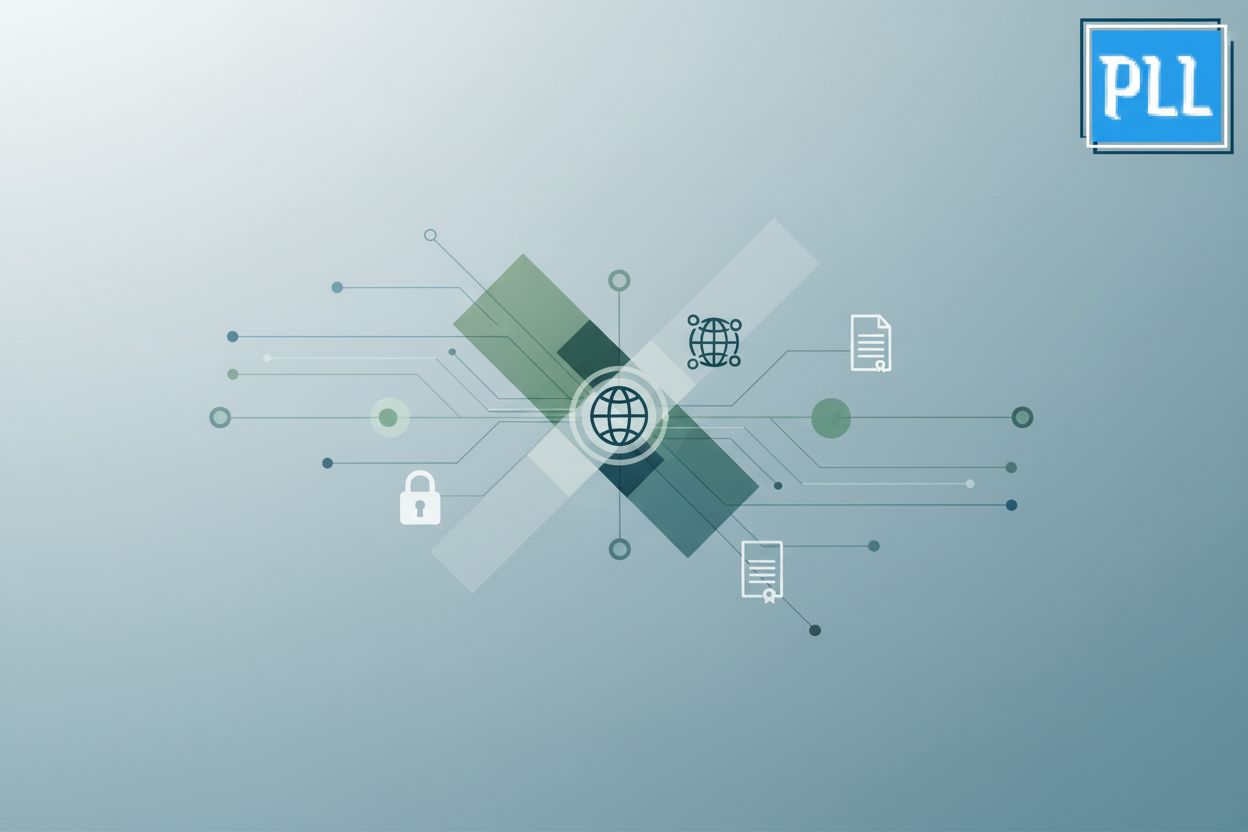Scale Your SEO Agency: The Power of White-Label Backlink Reporting
TL;DR
Understanding the Need for White-Label Backlink Reporting
Did you know that SEO agencies can spend countless hours compiling backlink reports? (The Do's and Don'ts of Agency SEO Reporting - Keyword.com) This time drain reduces efficiency and can lead to client dissatisfaction. Manual data collection often involves pulling information from multiple sources like Google Search Console, various backlink analysis tools, and even manual checks, each with its own interface and data format. Consolidating, cleaning, and then interpreting this vast amount of information into a coherent and client-friendly report is where the real time drain occurs.
In today's competitive SEO landscape, managing backlinks is more complex than ever. Agencies face increased competition and the evolving nature of link-building strategies. Comprehensive backlink analysis and monitoring are crucial for staying ahead.
- Increased competition: The digital marketplace is crowded. To stand out, a robust backlink profile is essential, requiring continuous effort and analysis.
- Evolving link-building: Old tactics no longer work. Modern strategies demand high-quality, relevant links that provide genuine value to users.
- Comprehensive analysis: Agencies must monitor their backlink profiles closely. This includes identifying toxic links, tracking link growth, and assessing the overall health of their backlink portfolio. Toxic links are essentially spammy, irrelevant, or manipulative links that can actually harm your website's search engine rankings. Identifying and disavowing them is crucial for maintaining a healthy backlink profile and avoiding search engine penalties.
Many agencies face significant challenges in backlink reporting. Manual data collection is time-consuming, and presenting complex data in an understandable format can be difficult. Inconsistent reporting often leads to client dissatisfaction.
- Time-consuming data collection: Manually gathering backlink data from various sources is inefficient. It takes valuable time away from strategic tasks.
- Presenting complex data: Clients may not understand technical SEO metrics. Agencies need to present data in a clear, concise, and actionable manner.
- Inconsistent reporting: Irregular or incomplete reports can erode client trust. Consistent, reliable reporting is essential for maintaining strong client relationships.
White-label backlink reporting offers a streamlined solution. It enables agencies to brand and customize reports with their own logo and company information. Automation and efficiency are key benefits, saving time and resources.
- Definition: White-label backlink reporting involves using a third-party tool to generate reports that appear as if they were created by your own agency.
- Branding and customization: Agencies can add their branding to reports, creating a seamless client experience. This reinforces the agency's brand identity and builds trust.
- Automation and efficiency: White-label tools automate data collection and report generation, freeing up agency staff to focus on strategy and client communication.
By adopting white-label backlink reporting, agencies can improve efficiency and client satisfaction. As WEB20 Ranker notes, agencies can leverage expert teams and comprehensive resources through white-label solutions. Having understood the critical need for efficient and professional backlink reporting, let's now explore the tangible benefits that white-label solutions bring to your SEO agency.
Key Benefits of Implementing White-Label Reporting
Did you know that agencies using white-label reporting often see a significant boost in client retention? (White-Label SEO & Client Retention: A Game-Changer for Agencies) It's all about building trust and showcasing value. Let's explore the key benefits of implementing white-label reporting to understand how it can transform your SEO agency.
White-label reporting allows you to maintain consistent branding across all client communications. This means every report, every email, and every interaction reinforces your agency's identity. Imagine a client receiving a detailed backlink analysis report with your logo and color scheme.
- Consistent branding creates a professional image, making your agency appear more established and reliable.
- Professional reports showcase your expertise and attention to detail, reinforcing the value you bring to the table.
- Increased client confidence leads to stronger, long-term relationships. Clients are more likely to stay with an agency they trust and perceive as competent.
One of the most significant advantages of white-label reporting is the automation it provides. Instead of manually compiling data, white-label tools generate reports automatically. This frees up your team to focus on strategic tasks and client communication.
- Automated data collection saves countless hours, reducing the time spent on mundane tasks.
- Reduced manual effort allows your team to focus on strategy, analysis, and client interaction.
- Faster turnaround times for client reporting demonstrates responsiveness and efficiency, impressing your clients and keeping them informed.
White-label reporting enables your agency to handle a larger client base without increasing overhead. By automating repetitive tasks like data compilation and report generation, your existing team can dedicate more time to client strategy and management, effectively increasing their capacity to handle a larger client portfolio without the need to hire additional personnel or specialized reporting staff.
- Handle more clients without adding staff, increasing your agency's profitability.
- Standardized processes promote efficiency and consistency across all client accounts.
- Focus on core SEO activities like strategy and client acquisition, driving business expansion.
As Sure Oak notes, agencies can achieve cost savings and revenue growth by outsourcing link building and focusing on strategic planning and client management. These benefits highlight the transformative power of white-label reporting. To fully realize these advantages, it's crucial to understand the essential features that make these tools so effective. Let's examine them.
Essential Features of a White-Label Backlink Reporting Tool
Did you know that automated backlink reporting can save SEO agencies up to 20 hours per week? (How Agencies Benefit from SEO Reporting Automation - MetricsWatch) The right white-label tool offers features that streamline your workflow and impress your clients. Let's explore the essential features that make these tools indispensable.
A top-tier white-label backlink reporting tool should seamlessly integrate with major SEO platforms. Think of tools like Ahrefs, SEMrush, and Moz. This integration pulls data directly from these sources, saving you the hassle of manual collection.
- Seamless integration ensures you're working with the most up-to-date information.
- Consolidating data from multiple sources gives a holistic view of your backlink profile.
- Real-time updates provide accuracy, allowing for timely adjustments to your SEO strategy.
Imagine you're managing SEO for a healthcare provider. The tool can pull data from various sources to monitor backlinks from medical journals, health blogs, and local directories, ensuring a comprehensive view of their online authority. This comprehensive view allows you to demonstrate how backlinks from authoritative medical journals enhance the client's domain authority and credibility, while links from relevant health blogs drive targeted traffic. Monitoring local directories ensures their visibility to patients seeking services in their area.
Customization is key to presenting data in a way that resonates with your clients. The best tools offer drag-and-drop report builders, making it easy to tailor reports to specific needs.
- Drag-and-drop builders allow for easy arrangement of data, highlighting what matters most to each client.
- Agency branding options let you add your logo, colors, and fonts, reinforcing your brand identity.
- Templates for various reports (monthly performance, competitor analysis) save time and ensure consistency.
Automation enhances efficiency and ensures your clients receive timely updates. Look for tools that allow you to schedule reports for automatic generation and delivery.
- Scheduled reports ensure clients receive regular updates without manual intervention.
- Customizable delivery options (email, PDF download) cater to different client preferences.
- Alerts and notifications for critical changes in backlink profiles enable prompt responses to potential issues.
For example, an e-commerce agency can set up automated monthly reports showcasing new backlinks, domain authority improvements, and traffic growth, delivered directly to their clients' inboxes.
These essential features transform how SEO agencies manage and present backlink data. Beyond the features of the tool itself, selecting the right partner to provide this white-label solution is critical for seamless integration and effective collaboration. Let's explore these key considerations when choosing a partner.
Choosing the Right White-Label Partner: Key Considerations
Choosing the right white-label partner is like selecting a co-pilot for your agency's flight—the wrong one can lead to turbulence, while the right one ensures a smooth journey. What key factors should you consider to ensure a successful partnership?
Before entrusting a partner with your clients' SEO, research their track record thoroughly. Look for client testimonials and reviews that speak to their reliability and expertise.
- Track record: A provider with a proven history of delivering results is more likely to meet your expectations.
- Industry experience: Ensure the partner has deep knowledge of the SEO landscape and link-building strategies.
- Case studies: Examine case studies to understand how the provider has successfully implemented their strategies for other clients.
For instance, if you serve clients in the finance industry, prioritize partners with experience in that specific niche.
In an era of heightened data protection awareness, it's crucial to ensure your white-label partner adheres to strict security standards. Clients trust you to protect their information, and your partner should uphold that trust. Ensuring compliance with data protection regulations like GDPR and CCPA is paramount, as you will be handling sensitive client information and performance data. Your partner must demonstrate a robust commitment to safeguarding this data to maintain client trust and avoid legal repercussions.
- Data protection regulations: Verify compliance with GDPR, CCPA, and other relevant regulations.
- Security measures: Investigate the provider's security protocols to safeguard client data from breaches.
- Privacy policy: Carefully review their privacy policy and data handling practices to ensure transparency and accountability.
Pricing models vary, and it's essential to choose one that aligns with your agency's financial structure and client needs. Additionally, robust support is crucial for addressing any issues that may arise.
- Pricing models: Compare subscription-based, usage-based, and other pricing models to find the best fit.
- Support level: Evaluate the availability of phone, email, and chat support to ensure timely assistance.
- Training resources: Consider the availability of training and onboarding resources to help your team effectively use the white-label tool.
With the right partner selected, the next crucial step is to seamlessly integrate their white-label reporting solution into your agency's daily workflow. Let's discuss how to achieve this.
Integrating White-Label Reporting into Your Agency Workflow
Integrating white-label reporting into your agency can feel like fitting the last piece of a puzzle. It's about making the process seamless and beneficial for everyone involved.
A smooth onboarding process sets the stage for a successful partnership. Here's how to make it happen:
- Develop a clear onboarding process for new clients. Create a step-by-step guide that outlines the reporting process, key metrics, and how to interpret the data. This ensures clients understand what to expect from the start.
- Train your team on how to use the reporting tool effectively. Hold regular training sessions to familiarize your team with the tool's features, customization options, and troubleshooting techniques. A well-trained team can leverage the tool to its full potential and provide better client support.
- Create internal documentation and best practices. Develop a comprehensive guide that covers everything from report generation to data interpretation. This will serve as a valuable resource for your team and ensure consistency in reporting.
Generic reports often miss the mark. Tailoring reports to each client's specific needs demonstrates your agency's commitment to their success.
- Understand each client's specific goals and reporting requirements. Conduct thorough consultations to identify their key performance indicators (KPIs) and reporting preferences. This will help you create reports that are relevant and actionable.
- Tailor reports to highlight the most relevant metrics. Focus on the metrics that align with the client's goals, such as organic traffic, keyword rankings, or conversion rates. Avoid overwhelming them with irrelevant data. For an e-commerce client, this might mean focusing on metrics like organic traffic to product pages, conversion rates from organic search, and the impact of new backlinks on sales. For a local service business, the focus might shift to local search rankings, Google My Business insights, and backlinks from local directories.
- Provide actionable insights and recommendations. Don't just present data; provide context and offer clear, concise recommendations based on the findings. This demonstrates your expertise and helps clients make informed decisions.
Open communication and transparency are vital for building trust and maintaining strong client relationships.
- Regularly communicate report findings to clients. Schedule regular meetings to discuss the reports, answer questions, and address any concerns. Consistent communication keeps clients informed and engaged.
- Explain complex data in a clear and concise manner. Avoid jargon and technical terms that clients may not understand. Use visuals, such as charts and graphs, to illustrate key trends and insights.
- Solicit feedback and adjust reporting as needed. Encourage clients to provide feedback on the reports and be willing to make adjustments based on their needs. This demonstrates your commitment to providing a valuable and customized service.
By integrating white-label reporting thoughtfully, you boost efficiency and strengthen client relationships. To truly understand the impact of white-label reporting, let's examine real-world success stories and see how agencies have achieved significant returns on their investment. Following these case studies, we will delve deeper into how to measure your own ROI.
Case Studies: Real-World Success with White-Label Reporting
Many SEO agencies find it challenging to demonstrate the concrete value of their services to clients. Let's explore how real-world agencies have leveraged white-label reporting to not only scale their operations but also significantly enhance client satisfaction and revenue.
One of the primary benefits of white-label reporting is the ability to manage a larger client base efficiently. For instance, Agency A leveraged white-label solutions to scale from 50 to 200 clients without proportionally increasing their workload. By automating the time-consuming process of report generation, Agency A was able to reallocate their existing team's time and expertise, allowing them to effectively manage a quadrupled client base without needing to hire additional reporting specialists.
- Managed Larger Client Base: By automating report generation, Agency A was able to provide timely and detailed updates to all clients. This scalability is essential for sustainable growth.
- Impact on Efficiency and Client Satisfaction: The implementation of white-label reporting freed up valuable time for the agency's team to focus on strategic tasks. Clients received consistent, professional reports, leading to increased satisfaction.
- ROI Through Improved Reporting: Agency A achieved a significant return on investment (ROI) by streamlining their reporting processes. This resulted in better resource allocation and improved client retention.
Transparent and consistent communication is key to building trust with clients. Agency B improved client retention by 30% by using white-label reporting to enhance their communication strategy.
- Enhanced Client Communication: Agency B used white-label reporting to provide clients with clear, concise reports that highlighted key performance indicators (KPIs). This transparency helped clients understand the value of the agency's services.
- Building Trust Through Transparent Reporting: By offering consistent and branded reports, Agency B fostered a sense of trust and reliability. Clients felt more informed and confident in the agency's expertise.
- Correlation Between Reporting and Loyalty: The enhanced transparency and communication directly correlated with increased client loyalty. Satisfied clients were more likely to renew their contracts and recommend the agency to others.
White-label reporting can also provide valuable insights that lead to upselling opportunities. Agency C used data-driven insights from their reports to identify areas where clients could benefit from additional services.
- Identifying Upselling Opportunities: By analyzing client data, Agency C identified opportunities to offer additional services, such as content creation or advanced link building. These insights were presented to clients in a clear and compelling manner.
- Impact of Data-Driven Insights: The agency's ability to identify and act on data-driven insights led to significant service expansion. Clients were more receptive to upselling when they saw the potential for further improvements.
- Revenue Growth Through Strategic Upselling: Agency C experienced substantial revenue growth by strategically upselling additional services to existing clients. This approach maximized the value of each client relationship and boosted the agency's overall profitability.
These examples highlight the transformative power of white-label reporting in scaling SEO agencies and improving client outcomes. Let's explore how to measure the ROI of your white-label reporting efforts.
Measuring the ROI of Your White-Label Reporting Efforts
Now that we've seen how white-label reporting can drive success, it's important to understand how to quantify its value for your agency. Measuring the return on investment (ROI) helps justify the expenditure and identify areas for further optimization.
The most direct way to measure ROI is by tracking the time and resources saved. Compare the hours your team previously spent on manual reporting to the current hours spent using the white-label solution.
- Time Savings: Calculate the hourly rate of your team members and multiply it by the hours saved on reporting tasks. This gives you a monetary value of the efficiency gained.
- Reduced Overhead: Consider if the automation has reduced the need for additional staff or specialized reporting roles. This can be a significant cost saving.
- Increased Capacity: Quantify how many more clients your team can now manage effectively due to the time saved. This directly impacts revenue potential.
White-label reporting also contributes to improved client retention and satisfaction, which have a direct impact on revenue.
- Client Retention Rates: Track your client retention rates before and after implementing white-label reporting. A higher retention rate means less churn and more consistent revenue.
- Client Lifetime Value (CLTV): Longer client relationships translate to a higher CLTV. Improved reporting can be a key factor in extending these relationships.
- Upselling and Cross-selling: As seen in Agency C's case study, better reporting can reveal opportunities for additional services, directly increasing revenue per client.
Finally, consider the impact on your agency's profitability and growth.
- Profit Margins: By reducing operational costs and increasing client capacity, white-label reporting can improve your agency's profit margins.
- Revenue Growth: The ability to take on more clients and upsell services directly contributes to overall revenue growth.
- Competitive Advantage: Agencies that can deliver professional, branded reports efficiently gain a competitive edge, attracting and retaining more clients.
By consistently tracking these metrics, you can clearly demonstrate the tangible benefits and financial advantages of investing in white-label backlink reporting.
Future Trends in White-Label Backlink Reporting
The future of white-label backlink reporting is dynamic, driven by emerging technologies and evolving client expectations. As SEO agencies adapt, embracing these trends will be crucial for staying competitive and delivering exceptional value.
Artificial intelligence (AI) is set to transform backlink reporting. Ai can automate report generation, analyze vast datasets, and identify patterns that humans might miss. Ai-driven predictive analytics can forecast potential impacts of link-building efforts on keyword rankings or organic traffic, enabling proactive strategy adjustments and helping agencies anticipate future performance trends.
Clients want reports that are easy to understand. Expect to see more visually appealing and interactive reports. Data visualization tools will simplify complex information, making it easier for clients to grasp key insights.
Integration with other marketing platforms will become standard. This includes crm and marketing automation systems. Centralized data management provides a holistic view of marketing performance, improving collaboration between seo and other marketing teams.
By embracing ai, enhanced visualization, and platform integration, agencies can unlock new levels of efficiency and client satisfaction.





